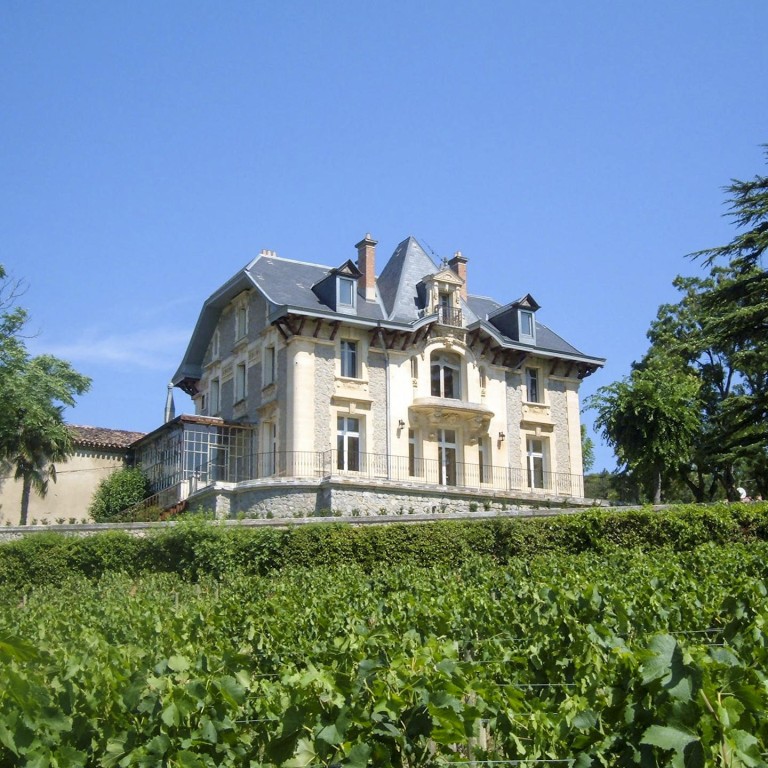
Look beyond 'Limoux' on the label to find excellent chardonnay
The summer heat in Languedoc is all pervasive. Even the geckos can barely lift their heads off the rocks. It's why the wines from this part of France tend to be so muscular, powerful and richly-fruited - the grapes can drink in as much sunshine as they need and winemakers struggle with low acidity rather than alcohol.
But head along the Aude river, due south from the fortified walls of Carcassonne, and you'll escape from its worst excesses. Here in Limoux, where timber-framed houses straddle the banks of the river, you are in the foothills of the eastern Pyrenees, more likely to bump into walkers than wine lovers.

It is, frankly, a bizarre location for an investment from Baroness Philippine de Rothschild, owner of Chateau Mouton Rothschild in Bordeaux. Until 2003, there wasn't even an appellation controlée here (AOC; the accepted sign of quality wine in France), and all wine was bottled as Vin de Pays. Today, the biggest producer is still the local co-operative cellars, Sieur d'Arques, making 60 per cent of the production of both AOC Limoux and Blanquette de Limoux. But even first growths can't resist the allure of undervalued terroir.
Certainly, as you drive away from the pretty but fairly unremarkable town of Limoux, up endless winding roads to the tiny village of Saint-Polycarpe, the scenery is hard to resist: all towering escarpments, oak forests and circling birds of prey.
Domaine de Baron'arques sits on one of the highest points of the appellation, with its 43 hectares of vineyards ranging between 250 metres and 350 metres above sea level, and the Pyrenees mountains behind heading up to 3,000 metres at their highest point.
The 17th-century estate used to be called Domaine de Lambert, and belonged to another local religious order that just might have made early sparkling wines; the Abbey of Saint-Polycarpe, until it was broken up after the French Revolution.
The Rothschilds ripped up 90 per cent of the vineyard upon their purchase in 1998, and replanted with the intention of making a high-quality red wine in this corner of the Languedoc.
The vineyards took a full five years to become productive, with 2003 the first vintage to make its way onto the market (the same year that the area gained its AOC status, I imagine not entirely hindered by a little first-growth political muscle).
Whatever their influence in the creation of the AOC, the local rules seems particularly suited to the Rothschild purchase, as the red wines must be made from a blend of Bordeaux and southern French varieties (Atlantic and Mediterranean grapes as Baron'arques refers to them) - so merlot, cabernet franc and cabernet sauvignon mixed with syrah and malbec.
It gives the resulting wines a fascinating blend of southern spice and exoticism of the Languedoc with the tannic hold and acidity of Bordeaux. For the whites, Baron'arques has stayed away from sparkling, and instead has gone for 100 per cent chardonnay - joining for me some of the most exciting wines of the Limoux appellation.
"The altitude here means we get acidity and freshness, and create red and white wines that can last," Vincent Montigaud, the director of the estate, told me last week during a 10-year vertical tasting of its wines. "The problem we have is convincing people to look beyond the word 'Limoux' on the label."
I first visited Domaine de Baron'arques in 2010, and loved revisiting the wines, although sadly not the estate itself, to see how they have progressed. Further afield in the Languedoc, other prestigious Bordeaux names have staked a claim; Lafite-Rothschild with Chateau d'Aussieres in Corbieres, and Chateau Pichon-Longueville with Mas Belles Eaux in the Coteaux de Languedoc.
But it's a tough sell and their parent companies don't necessarily help. The ambitious pricing for Baron'arques of between €30 (HK$320) and €35 per bottle, coupled with the Rothschild name, can make plenty of potential customers suspicious that it is a vanity project - probably why just 10 per cent of the production currently stays in France.
It does best, not surprisingly, outside of Europe, and most specifically in Japan, Taiwan and Hong Kong, where drinkers have fewer preconceptions.
Tasting back over 10 years showed just how well these wines have kept their structure and freshness - even the 2003 showed better than many of its Bordeaux counterparts are doing at this stage. And the chardonnay is a revelation, offering top value for money compared to burgundy. Cast aside any doubts and try it for yourself.

